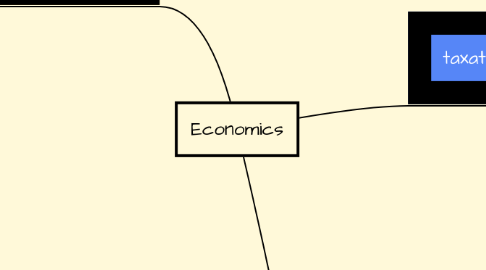
1. public sector
1.1. free market system- individuals and groups make decisions in their own interest, for their benefit- relies on supply and demand- no government intervention.
1.2. roles of government
1.2.1. provision of public goods and services
1.2.1.1. provide adequate amounts of private goods
1.2.1.2. natural monopolies- more efficient for one firm to supply the whole market, takes advantage of the economies of scale.
1.2.1.3. privatisation- transfer from public to private ownership
1.2.2. redistribution of income
1.2.3. regulation of business enterprises
1.2.4. macroeconomic management
1.3. modified market economy-based on private ownership, free enterprise and markets, but feature some government intervention to over come problems of equability. e.g Australia
2. income distribution
2.1. Income distribution is the equality with which income is dealt out among members of a society. If everyone earns exactly the same amount of money, then the income distribution is perfectly equal.
2.1.1. explanations of inequality in an economy: *education, training, and experience. *occupational conditions (worked hours etc) *personal aptitude (talents, developed skills) *opportunity (background, decisions work) *involuntary factors (sickness, redundant)
2.1.2. government intervenes the redistribution of income, to aim for equal share of income in an economy. governments do this by direct taxation, for example income tax, more income, greater pay of tax. governments also use its spending, like transfer payments (pensions, welfare), indirect government payments subsidised goods and services (school, health).
2.2. Lorenz Curve, maps the cumulative proportion of the population, ranked by income, against their cumulative share of income.
2.2.1. the diagonal line describes an economy in perfect income equality. whenever some income inequality exists the Lorenz Curve will bow outwards towards the right.
2.2.2. the further the curve from the line of perfect income equality, the greater the inequality of the economy.
2.3. Gini Coefficient, measures the degree of income equality in a country= A/A+B
2.3.1. the coefficient is the proportion of the area between the line of income equality and the inequality of a economy
2.3.2. a Gini Coefficient of 0 is perfect income equality, a coefficient of 1 is perfect income inequality
3. taxation
3.1. impact
3.1.1. where the tax is levied or collected
3.2. incidence
3.2.1. where the burden of the tax falls, who pays the tax
3.3. direct
3.3.1. collected from the taxpayers income, incidence and impact fall on the same person.
3.4. indirect
3.4.1. collected from taxpayers expenditure, e.g excise tax and GST. the impact and incidence fall on different people
3.5. roles
3.5.1. raising revenue
3.5.2. redistribution of income
3.5.3. decisions on allocating resources
3.5.4. regulating the business cycle
3.5.4.1. expansionary fiscal policy
3.5.4.2. contractionary fiscal policy
3.6. levied
3.6.1. proportional
3.6.1.1. constant portion of income no matter what level is being earned. tax rate remains same= horizontal ( company tax 30%)
3.6.2. regressive
3.6.2.1. greater tax on lower income earners. higher percentage of their income. rate of tax falls as income rises=downward slope (GST)
3.6.3. progressive
3.6.3.1. taxes increase in proportion as income rises. higher income, higher tax. rate of tax increase with income= upward slope/ vertical (income tax)
3.7. criteria
3.7.1. equity
3.7.1.1. feature both horizontal and vertical equity.
3.7.2. simple
3.7.2.1. the ability to understand what taxes how much and are they liable to pay OR convenient collection of taxes.
3.7.3. efficient
3.7.3.1. benefits of tax must outweigh the costs of collection,
3.8. types of taxes
3.8.1. taxes on income
3.8.1.1. income tax-progressive- impact and incidence same person-direct tax
3.8.1.2. company tax-proportional-incidence and impact on different people-indirect tax
3.8.1.3. fringe benefit tax-incidence and impact same person-direct tax-progressive
3.8.2. taxes on goods and services
3.8.2.1. GST-impact and incidence falls on different people-regressive-indirect tax
3.8.2.2. excise duties-impact and incidence on different people-indirect tax
3.8.3. taxes on property and wealth
3.8.3.1. capital gains tax-impact and incidence falls on same person-progressive-direct tax
